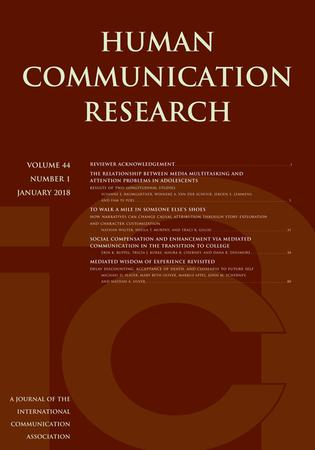混合媒体系统中的算法代理:社交机器人、选择性放大和关于新冠肺炎的党派新闻
IF 4.4
1区 文学
Q1 COMMUNICATION
引用次数: 20
摘要
社交机器人,或放大某些观点并在社交媒体上与选定参与者互动的算法代理,可能会通过协调行动影响在线讨论、新闻关注,甚至公众舆论。先前的研究已经记录了机器人活动的存在,并开发了检测算法。然而,社交机器人如何影响混合媒体系统的注意力动态仍然没有得到充分的研究。利用两条推文的大量集合(N = 1657551)和新闻报道(N = 50356)关于早期新冠肺炎大流行,我们采用机器人检测技术、结构主题建模和时间序列分析来表征推特机器人倾向于放大的主题与随后的跨党派新闻报道之间的时间关联。我们发现,机器人占总账户的8.98%,有选择地推广某些话题,并预测与党派叙事一致的报道。我们在宏观层面的纵向描述强调了机器人作为算法传播者的作用,并邀请未来的研究来解释微观层面的因果机制。本文章由计算机程序翻译,如有差异,请以英文原文为准。
Algorithmic Agents in the Hybrid Media System: Social Bots, Selective Amplification, and Partisan News about COVID-19
Social bots, or algorithmic agents that amplify certain viewpoints and interact with selected actors on social media, may influence online discussion, news attention, or even public opinion through coordinated action. Previous research has documented the presence of bot activities and developed detection algorithms. Yet, how social bots influence attention dynamics of the hybrid media system remains understudied. Leveraging a large collection of both tweets (N = 1,657,551) and news stories (N = 50,356) about the early COVID-19 pandemic, we employed bot detection techniques, structural topic modeling, and time series analysis to characterize the temporal associations between the topics Twitter bots tend to amplify and subsequent news coverage across the partisan spectrum. We found that bots represented 8.98% of total accounts, selectively promoted certain topics and predicted coverage aligned with partisan narratives. Our macro-level longitudinal description highlights the role of bots as algorithmic communicators and invites future research to explain micro-level causal mechanisms.
求助全文
通过发布文献求助,成功后即可免费获取论文全文。
去求助
来源期刊

Human Communication Research
COMMUNICATION-
CiteScore
8.20
自引率
2.00%
发文量
28
期刊介绍:
Human Communication Research is one of the official journals of the prestigious International Communication Association and concentrates on presenting the best empirical work in the area of human communication. It is a top-ranked communication studies journal and one of the top ten journals in the field of human communication. Major topic areas for the journal include language and social interaction, nonverbal communication, interpersonal communication, organizational communication and new technologies, mass communication, health communication, intercultural communication, and developmental issues in communication.
 求助内容:
求助内容: 应助结果提醒方式:
应助结果提醒方式:


